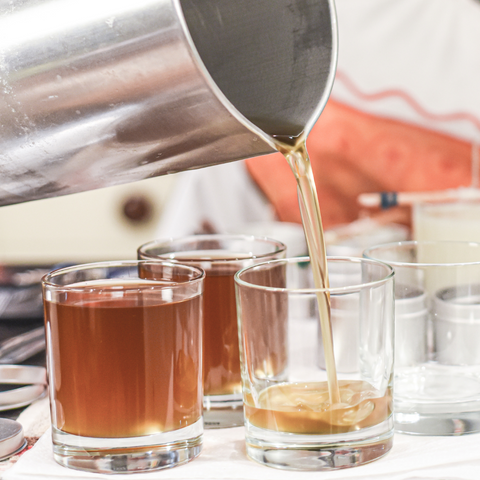Become a master candle maker by getting your head around the dialogue used in the industry.
Cold Throw
A term used to describe a scent and its strength before the candle is lit for the first time.
Cure
To age the candle whilst changes are still occurring to the molecular structure. During this time wax will bond with the fragrance oil as well.

Flashpoint
The lowest temperature at which vapours of a fluid will ignite (refers to both wax and fragrance oils). For wax, it is the temperature it must reach before it combusts and catches fire. For fragrance, it is the temperature it must reach in order to catch fire when coming into contact with a spark or even an open flame.
Fragrance Load
The amount of fragrance used per the amount of wax. Usually between 6 and 10% of fragrance oil is best and most common.
"Candle lingo might seem a bit mystifying at first, but fear not we are here for you"
Frosting
A white, crystalline layer that forms on the surface of natural waxes such as soy. This is also known as ‘bloom’.
Glass Adhesion
Also known as ‘wet spots’. When wax cools too quickly it shrinks and can pull away from the glass. This is quite common with container candles.
Hot Throw
A term used to describe the strength of a fragrance while the candle is burning. A good hot throw is most desirable. To evaluate the hot throw of a candle, burn it for at least 2-3 hours but not more than 4 hours.
Melt Point
The temperature at which melting wax gets so hot it can turn from solid form into a liquid.
Melt Pool
The liquid layer of wax that forms on the surface of the candle around the wick as the candle burns.
Mushrooming
Carbon mushrooms form at the top of a candle wick caused by incomplete combustion and can occur when you are using the wrong wick size, wax additives or even fragrance can contribute to the ‘mushrooming' effect.

Sink Holes
Crater-like holes that appear on the surface of a soy candle after it has cooled down completely. They are caused by air bubbles or pockets that are trapped in the wax during the cooling process.
Tunnelling
Occurs when a wick is too small for a container candle. The wick will burn straight down the centre of the candle leaving no melt pool. The flame will continually go out.
Got another to add to the list? Leave us a comment below..






















